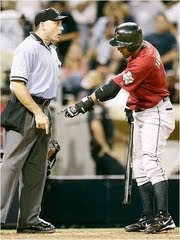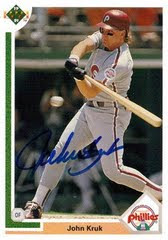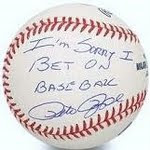The basis questions to the two data sets was as follows:
1) Do players who walk more get more PAs (in other words, do players who walk more have longer careers)?
2) Are players who walk more generally better at baseball (is BB% correlated to wOBA)?*
*note: wOBA is an OPS-like metric, which is skewed towards OBP rather than SLG and accounts for other factors such as SB%.
Chart #1 (click to enlarge): BB% (x-variable) to PAs (y-variable)

The R-Squared for this data set is .551
Chart #2 (click to enlarge): BB% (x-variable) to wOBA (y-variable)

The R-Squared for this data set is .639 (no surprise).
Other tidbits of data:
-The average wOBA over this sample size was .321
-The average BB% of the 3,636 players was 8.21%
-The average PA/career in the data set was 3596.
Conclusions:
-No surprise here, but the backbone of production is walking. There is a very high (approx. +.64) correlation.
-Walking is an old man's skill. There is a strong coefficient of determination between how many PAs a player will get over the course of his career and his walk rate. I feel that the strength of the coefficient is understated by two factors. First, guys like Albert Pujols are still young. In other words, a lot of very good players are still very young and haven't gotten the chance to accumulate 6000+ PAs yet. Secondly, and more importantly, many players with great talent are derailed by injury. There are plenty of players with fantastic peripherals who just cannot stay healthy and thus get fewer PAs across their career, thus distorting the lower ends of the data. When calculating the average PAs for players with better walk rates within the data (13+%), I noticed many players whose careers ended before accumulating even 2500 PAs.
This data should be pretty reliable. The minimum sample sizes necessary to draw statistically relevant inferences from the data is 200 PA for BB% and 500 PA for OPS. wOBA is somewhat related to OPS (though a much better representation of a player's offensive value), thus I make the logical, but mathematically unproven assumption that 1000 PAs would be a good minimum range for the data from which I could draw statistically relevant conclusions about wOBA (in relation to BB%).
All in all, the answer seems to be yes, walking is an old man's sport.







